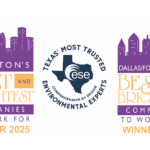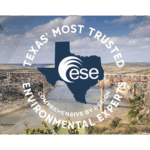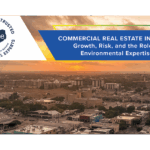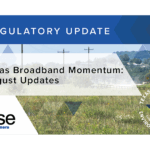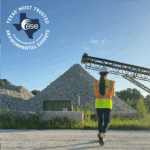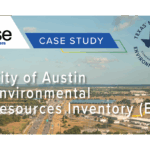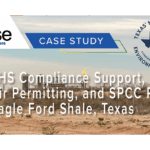
When it comes to property transactions in Rowlett, Phase 1 Environmental Site Assessments play a critical role in evaluating potential environmental risks and liabilities. These assessments help buyers and lenders understand the environmental condition of a property before making any investment decisions. In this article, we will explore the importance of Phase 1 Environmental Site Assessments, the key components involved in the assessment process, potential environmental concerns in Rowlett, mitigation strategies for identified risks, and the legal and regulatory framework surrounding these assessments.
Understanding the Importance of Phase 1 Environmental Site Assessments
Phase 1 Environmental Site Assessments are vital for several reasons. Firstly, they help identify any potential environmental risks associated with a property, such as soil or groundwater contamination. By conducting a thorough assessment, buyers and lenders can make informed decisions and mitigate any potential liabilities.
Additionally, Phase 1 Environmental Site Assessments are often a requirement for financing. Lenders want to ensure that the property they are financing does not have any significant environmental concerns that could affect its value or lead to potential lawsuits in the future. By conducting an assessment, lenders can evaluate the level of risk associated with the property, which can influence lending decisions.
The Role of Environmental Site Assessments in Property Transactions
In property transactions, Phase 1 Environmental Site Assessments serve as a crucial due diligence tool. They provide a comprehensive evaluation of the environmental condition of a property, allowing buyers to make informed decisions based on accurate and reliable information. These assessments also protect buyers from unexpected environmental liabilities and the financial burden associated with remediation efforts.
Furthermore, Phase 1 Environmental Site Assessments are beneficial to sellers as well. By conducting an assessment before listing a property, sellers can identify any potential environmental issues and develop a proactive plan to address them. This approach can help increase the marketability of the property and expedite the sales process.
Key Components of a Phase 1 Environmental Site Assessment
A Phase 1 Environmental Site Assessment typically involves several crucial components, each contributing to a comprehensive evaluation of a property’s environmental condition. The assessment begins with an initial site inspection and historical review, followed by interviews and a regulatory records check. Finally, the findings are compiled in a detailed report.
Initial Site Inspection and Historical Review
The initial site inspection involves a thorough examination of the property and its surroundings. This includes evaluating the physical condition of the property, identifying potential sources of contamination, and assessing nearby land uses that may pose risks. The historical review involves researching the property’s past usage, ownership, and any previous environmental investigations or remediation efforts.
Interviews and Regulatory Records Check
During the assessment process, interviews are conducted with current and past owners, occupants, and other individuals familiar with the property. These interviews aim to gather information about potential environmental issues, past activities, and known contamination sources. Simultaneously, a regulatory records check is conducted to review federal, state, and local databases for information on permits, violations, and other environmental compliance-related records.
Report Preparation and Findings
Based on the findings from the site inspection, historical review, interviews, and regulatory records check, a Phase 1 Environmental Site Assessment report is prepared. The report provides a comprehensive overview of the environmental condition of the property, any identified risks or concerns, and recommendations for further investigation or mitigation measures if necessary.
The Process of Conducting a Phase 1 Environmental Site Assessment in Rowlett
In Rowlett, conducting a Phase 1 Environmental Site Assessment follows a standardized process to ensure thorough and accurate evaluations. The process typically involves an initial site inspection and historical review, interviews and a regulatory records check, and culminates in the preparation of a detailed report.
Initial Site Inspection and Historical Review
The initial site inspection involves a careful examination of the property and its surroundings. Site assessors evaluate the property’s current condition, including structures, drainage systems, and potential pollution sources. They also assess the neighboring areas to identify any potential risks from nearby land uses or activities.
In addition to the physical inspection, a historical review is conducted, examining the property’s past usage and ownership records. This review helps identify any previous activities or operations that may have contributed to environmental concerns. It may also reveal any prior investigations or remediation efforts that have taken place.
Interviews and Regulatory Records Check
As part of the Phase 1 Environmental Site Assessment, interviews are conducted with relevant parties, including property owners, tenants, and local authorities. These interviews aim to gather information about potential environmental issues, previous activities on the property, and any known contamination sources.
Simultaneously, a regulatory records check is performed to review federal, state, and local databases for any environmental permits, violations, or enforcement actions associated with the property. This check helps assess compliance with applicable environmental regulations and identify any potential liabilities or ongoing monitoring requirements.
Report Preparation and Findings
After completing the site inspection, historical review, interviews, and regulatory records check, a comprehensive report is prepared. This report documents the findings of the Phase 1 Environmental Site Assessment, including any identified environmental risks or concerns.
The report typically includes an executive summary, detailing the purpose and scope of the assessment, as well as the key findings and recommendations. It also provides a detailed description of the site, including information on neighboring properties, potential contamination sources, and any identified deficiencies in environmental management or control measures.
Additionally, the report may include recommendations for further investigation or additional testing if necessary. These recommendations help buyers and lenders make informed decisions about the property and outline any potential mitigation measures required to address identified risks.
Potential Environmental Concerns in Rowlett
Like any other location, Rowlett is not immune to potential environmental concerns that need to be considered during Phase 1 Environmental Site Assessments. Some of the key environmental concerns associated with properties in Rowlett include soil contamination, groundwater and surface water contamination, and hazardous substances and petroleum products.
Soil Contamination Issues
Rowlett’s industrial history may have left behind soil contamination issues. Industrial operations, previous land uses, or improper waste disposal practices can contribute to the presence of contaminants in the soil. Phase 1 Environmental Site Assessments thoroughly evaluate soil conditions to identify any potential risks.
Groundwater and Surface Water Contamination
The proximity of Rowlett to water bodies, such as lakes and rivers, makes it essential to assess the potential risk of groundwater and surface water contamination. Industrial activities, underground storage tanks, or improper disposal of hazardous substances can impact the quality of these water resources, posing challenges to the environment and human health.
Hazardous Substances and Petroleum Products
The presence of hazardous substances and petroleum products can significantly impact the environmental condition of properties in Rowlett. Contamination from leaking underground storage tanks, spills, or improper disposal can pose risks to both the property itself and the surrounding environment. Phase 1 Environmental Site Assessments evaluate the potential presence of these substances to ensure appropriate measures are taken.
Mitigation Strategies for Identified Environmental Risks
When environmental risks are identified during a Phase 1 Environmental Site Assessment, it is crucial to have mitigation strategies in place to address them effectively. The specific strategies will vary depending on the nature and severity of the risks, but they generally fall into two categories: remediation plans for soil and water contamination and management of hazardous materials.
Remediation Plans for Soil and Water Contamination
If soil or water contamination is identified, the next step is to develop a remediation plan. This plan outlines the steps and strategies to remove, treat, or manage the contaminants to minimize their impact on the environment and human health. Remediation efforts may include excavation and removal, soil vapor extraction, groundwater treatment, or a combination of techniques based on the specific situation.
Management of Hazardous Materials
Managing hazardous materials is another critical aspect of mitigating environmental risks. This involves implementing proper storage, handling, and disposal practices to minimize the potential for releases or contamination. Companies and property owners should comply with relevant regulations and implement appropriate control measures to ensure the safe management of hazardous substances.
Legal and Regulatory Framework for Environmental Site Assessments
Phase 1 Environmental Site Assessments are conducted within a legal and regulatory framework that ensures compliance with federal, state, and local environmental laws. Understanding this framework is essential for all parties involved in property transactions in Rowlett.
Federal and State Environmental Laws
At the federal level, Phase 1 Environmental Site Assessments are conducted in accordance with the guidelines outlined by the Environmental Protection Agency (EPA). These guidelines provide a standardized approach to conducting assessments and help ensure consistency and accuracy across different locations and environmental conditions.
State environmental laws complement federal regulations and may introduce additional requirements or standards. In Texas, the Texas Commission on Environmental Quality (TCEQ) outlines the regulations and procedures for conducting Phase 1 Environmental Site Assessments. Adhering to these state-specific requirements is essential to ensure compliance and accuracy in the assessment process.
Local Environmental Regulations in Rowlett
Rowlett may have local environmental regulations or ordinances that property owners and buyers need to be aware of. These regulations can include zoning restrictions, stormwater management requirements, or specific guidelines for handling hazardous materials. It is crucial to consult local authorities or environmental professionals to ensure compliance with these regulations.
In conclusion, Phase 1 Environmental Site Assessments are an integral part of property transactions in Rowlett. By understanding the importance of these assessments, the key components involved in the process, potential environmental concerns in Rowlett, mitigation strategies for identified risks, and the legal and regulatory framework surrounding them, buyers, lenders, and property owners can make informed decisions and ensure compliance with environmental regulations. Conducting a thorough assessment helps minimize risks, protect the environment, and safeguard the value of properties in Rowlett.
If you’re ready to ensure your property transactions in Rowlett meet the highest environmental standards, look no further than ESE Partners. Our team of skilled environmental engineers and scientists are equipped to provide comprehensive Phase 1 Environmental Site Assessments, tailored to the unique challenges of your business. With a commitment to responsible problem-solving and a deep understanding of local regulations, ESE Partners is your partner in moving forward with confidence. Don’t let environmental risks stand in the way of your success. Request A Proposal today and take the first step towards safeguarding your investment and the community’s quality of life.

